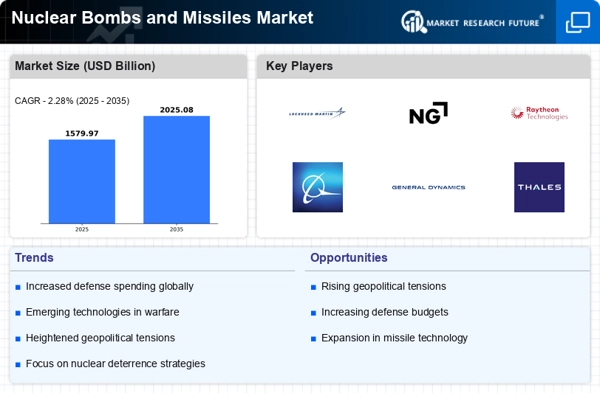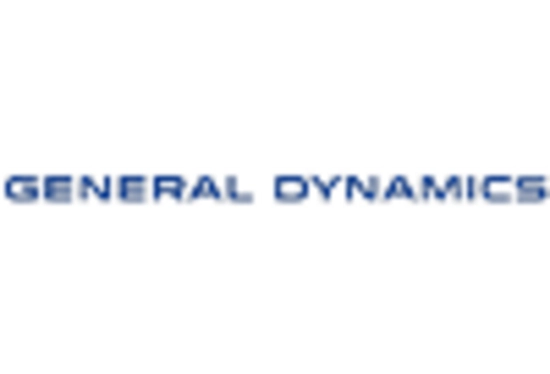The Nuclear Bombs and Missiles Market is characterized by a complex interplay of geopolitical tensions, technological advancements, and evolving defense strategies. As of October 2025, key players such as Lockheed Martin (US), Northrop Grumman (US), and China Aerospace Science and Technology Corporation (CN) are at the forefront, each adopting distinct strategies to enhance their market positioning. Lockheed Martin (US) emphasizes innovation in missile defense systems, while Northrop Grumman (US) focuses on integrating advanced technologies into their existing platforms. Meanwhile, China Aerospace Science and Technology Corporation (CN) is rapidly expanding its capabilities, particularly in hypersonic missile technology, which is reshaping the competitive landscape.
In terms of business tactics, companies are increasingly localizing manufacturing to mitigate supply chain vulnerabilities and enhance responsiveness to regional demands. The market appears moderately fragmented, with a mix of established defense contractors and emerging players vying for market share. This competitive structure allows for a diverse range of offerings, although the influence of major players remains substantial, often dictating technological trends and pricing strategies.
In August 2025, Lockheed Martin (US) announced a strategic partnership with a leading tech firm to develop next-generation missile systems that leverage artificial intelligence for enhanced targeting accuracy. This collaboration is likely to position Lockheed Martin (US) as a leader in the integration of AI within defense systems, potentially setting new standards for operational efficiency and effectiveness in missile technology.
In September 2025, Northrop Grumman (US) secured a significant contract with the U.S. Department of Defense to upgrade its existing missile defense systems. This contract not only reinforces Northrop Grumman's (US) market position but also underscores the increasing demand for modernization in defense capabilities, reflecting a broader trend towards enhancing national security through advanced technology.
In July 2025, China Aerospace Science and Technology Corporation (CN) successfully tested a new hypersonic missile system, which is expected to significantly enhance China's strategic deterrence capabilities. This development indicates a shift in the global balance of power and highlights the urgency for other nations to accelerate their own missile technology advancements to maintain competitive parity.
As of October 2025, the competitive trends in the Nuclear Bombs and Missiles Market are increasingly defined by digitalization, sustainability, and the integration of artificial intelligence. Strategic alliances are becoming more prevalent, as companies recognize the need to pool resources and expertise to navigate the complexities of modern defense requirements. Looking ahead, competitive differentiation is likely to evolve from traditional price-based competition towards a focus on innovation, technological advancements, and the reliability of supply chains, as companies strive to meet the demands of an ever-changing geopolitical landscape.

















Leave a Comment